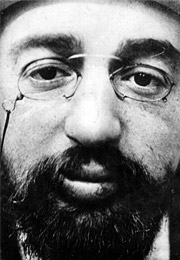


Oil on canvas
97.8 x 78.7 cm. (38 1/2 x 31 in.)
frame: 128.3 x 109.9 x 13 cm (50 1/2 x 43 1/4 x 5 1/8 in.)
1988.62.12
Signed lower left: TL [stamp or monogram]
Manzi, Paris. Barbazanges, Paris. Georges Bernheim, Paris. Mr. & Mrs. Charles H. and Mary F. S. Worcester, Chicago, 1928; by bequest to The Art Institute of Chicago, 12 Dec. 1929; acquired (as exchange for Henri Matisse’s painting Bathers by the River) by Henry Pearlman, by 28 Feb.1953; Henry and Rose Pearlman Foundation, by 1971.
While spending the winter in 1900 in Bordeaux, Toulouse-Lautrec was so taken by a production of Messaline, Isidore de Lara’s 1899 opera about sexual obsession in ancient Rome, that he created six paintings and numerous drawings inspired by it. The series reflects the artist’s career-long fascination with performers on stage, though he is best known for images of entertainers in the dance halls, cabarets, and cafés of Paris’s demimonde. As is typical of his approach to such subjects, he chose an unusual vantage point that possibly resulted from his deep interest in Japanese woodblock prints: the viewer glimpses the scene from stage left, looking slightly up toward the lascivious Empress Messalina. The garish green and red tones create a compelling accompaniment to the torrid plot of the opera, which ends with the violent deaths of Messalina’s lovers, the brothers Harès and Hellion. The artist also captured the effect that the gaslights used in theaters of the time created: a greenish cast on performers’ skins.
Some years ago, while walking through the office of the president of the Galerie Charpentier, I saw hanging on a wall some fifty feet long, and twenty feet high, a single…
Some years ago, while walking through the office of the president of the Galerie Charpentier, I saw hanging on a wall some fifty feet long, and twenty feet high, a single painting: a large Matisse of four bathers by a river, which I immediately liked. I was given the size in centimeters, and, not being too quick at conversion to feet and inches, the painting didn’t look so large to me in that setting. Not until it arrived in the United States and I received the shipping costs did I realize I had purchased a painting thirteen feet long and six feet high. When I saw it at the dock and realized that I couldn’t possibly hang it anywhere, I frantically telephoned various museums about housing it. The Philadelphia Museum of Art offered to house the painting, and it remained there for more than a year, until it was included in the large Matisse retrospective exhibition, which traveled to the West Coast museums and the Art Institute of Chicago. The Art Institute happened to be looking for a large Matisse, and in return for the Bathers they offered me a Toulouse-Lautrec of the opera Messaline which was of a more easily hangable size. I was quite pleased with it, and as a result of the exchange both parties were well satisfied.

Henri de Toulouse-Lautrec (1864-1901)
Known as much for his flamboyant character as his groundbreaking artwork, Henri de Toulouse-Lautrec (1864–1901) is widely celebrated for paintings, prints, and posters that evoke the dynamic whirl of fin-de-siècle Paris. He developed a distinctive style that used boldly sinuous contours and a sharply hued palette to capture the eccentric characters that frequented Parisian stages, cafés, circuses, and brothels. Toulouse-Lautrec offered a frank depiction of life in the city’s social underbelly, and the graphic innovations that he produced over a short, intense career were extremely influential on following generations of artists. Although he did not affiliate with any particular school, he is often considered one of the major figures of Post-Impressionism.
Toulouse-Lautrec hailed from an aristocratic family in southern France, and from his parents (who were first cousins) inherited a genetic condition that stunted his growth and left him crippled. Surrounded by family members who were amateur artists, Toulouse-Lautrec was encouraged in his artistic pursuits from a young age and found art a welcome distraction, especially while convalescing. Upon moving from Albi to Paris in 1882, he studied in the ateliers of two academic painters—yet he turned toward subjects more in line with the Impressionist painters, focusing on life in the modern city, particularly its margins. Living a bohemian life in Montmartre, he was drawn to subjects such as prostitutes and performers and was perhaps motivated by a sense of identification with the socially marginalized due to his physical deformities. He also became known for his acerbic wit, and at the age of just twenty he created a sensation with his precocious large-scale parody of Puvis de Chavannes’s The Sacred Grove.
A denizen of the Parisian nightlife scene, Toulouse-Lautrec depicted life in the cabarets and theaters he frequented and created influential posters for venues—such as the Moulin Rouge—and their stars. Using new lithographic techniques together with compositional effects derived from Japanese woodblock prints, Toulouse-Lautrec developed indelible icons of Paris as the capital of art and entertainment; these images were at once popular and avant-garde. While his health rapidly deteriorated from 1899 due to a combination of syphilis and alcohol, he created a late body of work that was inspired by a performance of Isidore de Lara’s opera Messaline, which he viewed in Bordeaux. These paintings highlight Toulouse-Lautrec’s attraction to the alternative world of the stage, a realm of artifice and exaggeration.